In most Southeast Asian markets in Philly (i.e. Cambodian, Vietnamese markets of North and South Philly, as well as the 3 large markets on Washington Ave) you can find the very tasty herb pictured below. It has a very unique flavor, and it is not replaceable. In English it is most commonly called “Vietnamese mint”, but it might be called “lady thumb” or “Vietnamese coriander”. In Philadelphia markets it might be labeled with Vietnamese or Chinese: Rau răm, or 越南香菜. In Thailand and Laos the herb is called phak paew or phak fai ผักแพว/ຜັກແພວ (ผักไผ่/ຜັກໄຝ). The leaf can be used in a number of preparations, including as a raw accompaniment to salads and dips.
When looking for this herb, which might not be labeled at all, look for the long skinny leaves that are dark on top and light on the bottom. Above and below are some images to help you identify it. 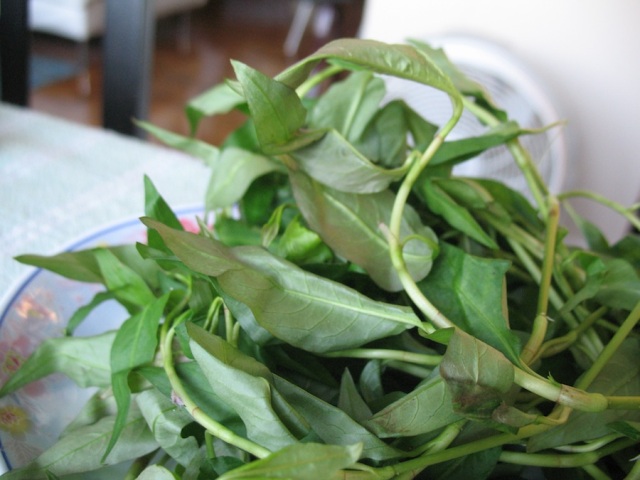 This is a wonderful addition to Vietnamese spring rolls (the kind with rice paper wrapped around fresh herbs). It is also delicious in soup like the one highlighted below.
This is a wonderful addition to Vietnamese spring rolls (the kind with rice paper wrapped around fresh herbs). It is also delicious in soup like the one highlighted below.
Recipe: Sour Chicken “salad” (or soup) Yam jin gai ยำจิ้นไก่
This dish is sometimes described (and manifested) as a salad, and sometimes it is a soup. If you browse the internet for images of this dish, you’ll see what I mean. “Yam” (pronounced “yum”) is generally a genre of mixed sour salads in Thai, but in this case it is more of a soupy salad. The flavors of this dish are very unique to Northern Thailand. Anyone who has explored food there will attest, flavors are totally different from other parts of Thailand.
In addition to “Vietnamese mint” here are some images of other key items that lend unique Northern Thai flavors to this dish, specifically two items discussed in previous posts, dipli and makhwaen:
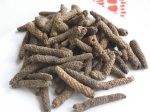
Dipli or “long peppers”
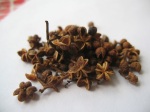
Makhwaen, relative of “Sichuan peppercorn”

makrut leaves
Our past attempts at this dish were more like salads, using Northern-style namprik laab (minced meat) spice mixes that we brought with us from Chiangmai. This time, I wanted to try making this from all fresh spices. This time I mostly followed Andy Ricker‘s recipe. The result was delicious, though a little less spicy than the ready-made spice mix:
1. Make a paste with coriander seeds and the above dipli, makhwaen, dried Thai chiles, salt, fermented crayfish paste (kapi) and Thai fermented fish.
2. Boil a chicken (I used a 2 lb “old chicken” from Hong Kong market (North Philly)), spice the broth with lemongrass, kapi, galangal slices, and cilantro roots (see above).
3. Shred that chicken by hand, toss the bones. Boil some of that strained broth with the shredded chicken and the paste from step 1, along with roughly chopped lemongrass, galangal, shallots, kaffir lime leaves, and salt.
4. When the flavors are properly mixed, taste for saltiness. Dump in equal parts of the following roughly chopped herbs: Vietnamese mint (I just separated leaves from stem), sawtooth coriander, cilantro, and dill. Turn the heat off, soup and salad are served.
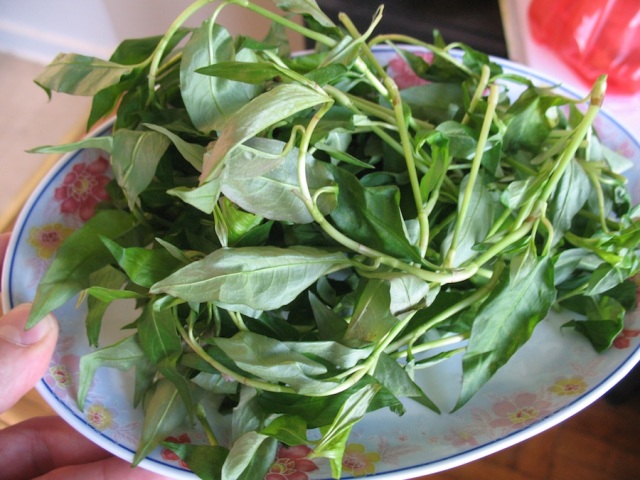
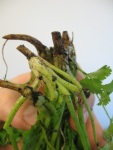
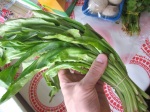
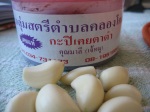
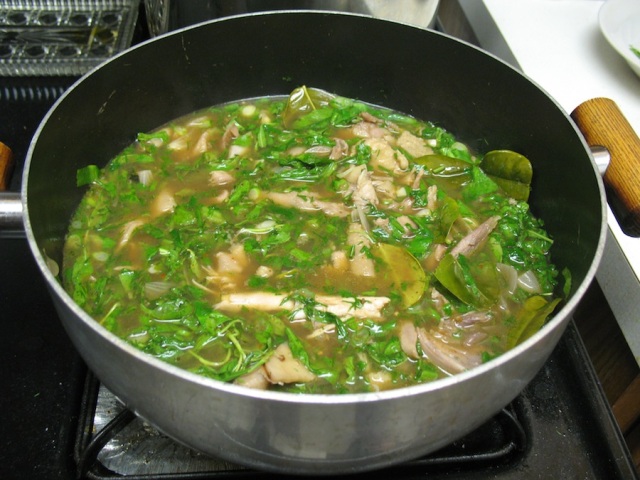
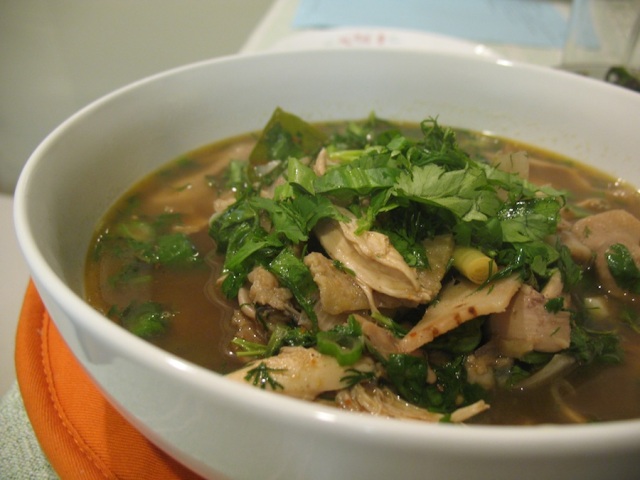
Pingback: Thai basil and green curry with chicken | Asian Markets of Philadelphia
Pingback: Spiced and pounded beef salad | Asian Markets of Philadelphia
Pingback: Sticky rice as thickener and Isaan chicken stew | Asian Markets of Philadelphia
Pingback: The fresh herb section | Asian Markets of Philadelphia
Pingback: “Sichuan pepper” and some of its relatives | Asian Markets of Philadelphia
Pingback: Long peppers found | Asian Markets of Philadelphia